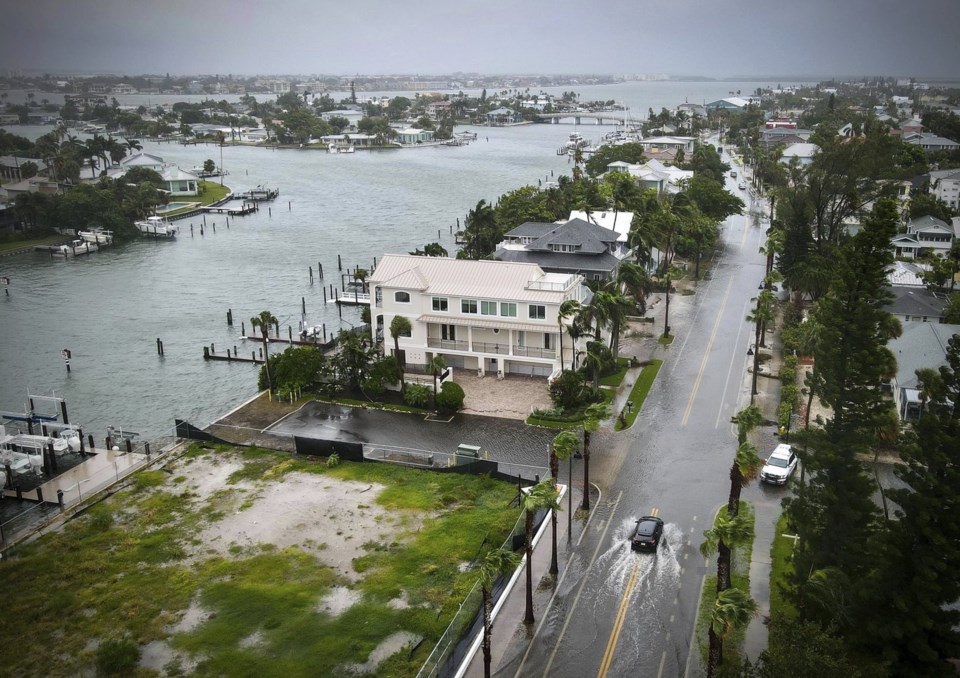Tropical Storm Debby’s Formation and Development: Tropical Storm Debby Hurricane

Tropical Storm Debby, a significant weather event, formed in the Atlantic Ocean and impacted various regions. Its formation and development were influenced by a complex interplay of meteorological factors.
Meteorological Conditions Leading to Debby’s Formation, Tropical storm debby hurricane
Tropical storms form in warm, tropical waters where the sea surface temperature is at least 80°F (26.5°C). This warm water provides the necessary heat and moisture to fuel the storm’s development. The presence of a pre-existing weather disturbance, such as a low-pressure system, can also contribute to the formation process. Debby’s formation was aided by a pre-existing area of low pressure located over the northwestern Atlantic Ocean. This low-pressure system provided the initial trigger for the development of the storm. The surrounding atmospheric conditions, including the presence of weak vertical wind shear, allowed for the organization and intensification of the disturbance.
Stages of Debby’s Development
Tropical storms typically develop in a series of stages, starting as a tropical disturbance and progressing to a tropical depression, tropical storm, and potentially a hurricane. Debby’s development followed this typical progression.
Tropical Depression
Initially, Debby was classified as a tropical depression, characterized by organized thunderstorms and a closed circulation. At this stage, the system’s maximum sustained winds were below 38 mph (61 km/h). As the tropical depression moved westward across the Atlantic, it encountered favorable conditions for further development.
Tropical Storm
Debby intensified into a tropical storm when its maximum sustained winds reached 39 mph (63 km/h) or higher. This intensification was fueled by the warm ocean waters and the absence of strong vertical wind shear. The storm continued to strengthen as it moved towards the coastline.
Factors Influencing Debby’s Track and Intensity
The movement and intensity of a tropical storm are influenced by various factors, including the steering currents, the Coriolis effect, and the presence of upper-level winds.
Steering Currents
Steering currents are large-scale air movements in the atmosphere that influence the direction of a tropical storm’s track. Debby’s track was primarily influenced by the prevailing westerly winds, which steered the storm towards the east coast of the United States.
Coriolis Effect
The Coriolis effect is a force that acts on objects moving in a rotating system, such as the Earth. This force causes tropical storms to curve to the right in the Northern Hemisphere and to the left in the Southern Hemisphere. Debby’s track was influenced by the Coriolis effect, which caused the storm to curve slightly to the right as it moved towards the coast.
Upper-Level Winds
Upper-level winds can have a significant impact on a tropical storm’s intensity. Strong upper-level winds can shear the storm’s thunderstorms, disrupting the organization and weakening the system. However, weak upper-level winds can allow the storm to intensify. Debby encountered relatively weak upper-level winds during its development, which allowed for its intensification.
Tropical storm debby hurricane – Tropical Storm Debby, a powerful storm that swept through the Southeast, caused widespread damage and disruption. But amidst the chaos, parents still had to find ways to feed their little ones, and that often meant setting up a makeshift mealtime space.
For those struggling with this challenge, check out this guide for choosing the right toddler eating table and chair , a must-have for any parent navigating the unpredictable world of toddlers and storms.
Tropical Storm Debby’s heavy rains left many homeowners scrambling to find ways to protect their furniture. A sturdy, stylish 4 chair glass table could be a great investment for those worried about water damage, as it’s easy to clean and doesn’t absorb moisture like wood.
With a little planning and preparation, you can weather any storm, literally and figuratively.
